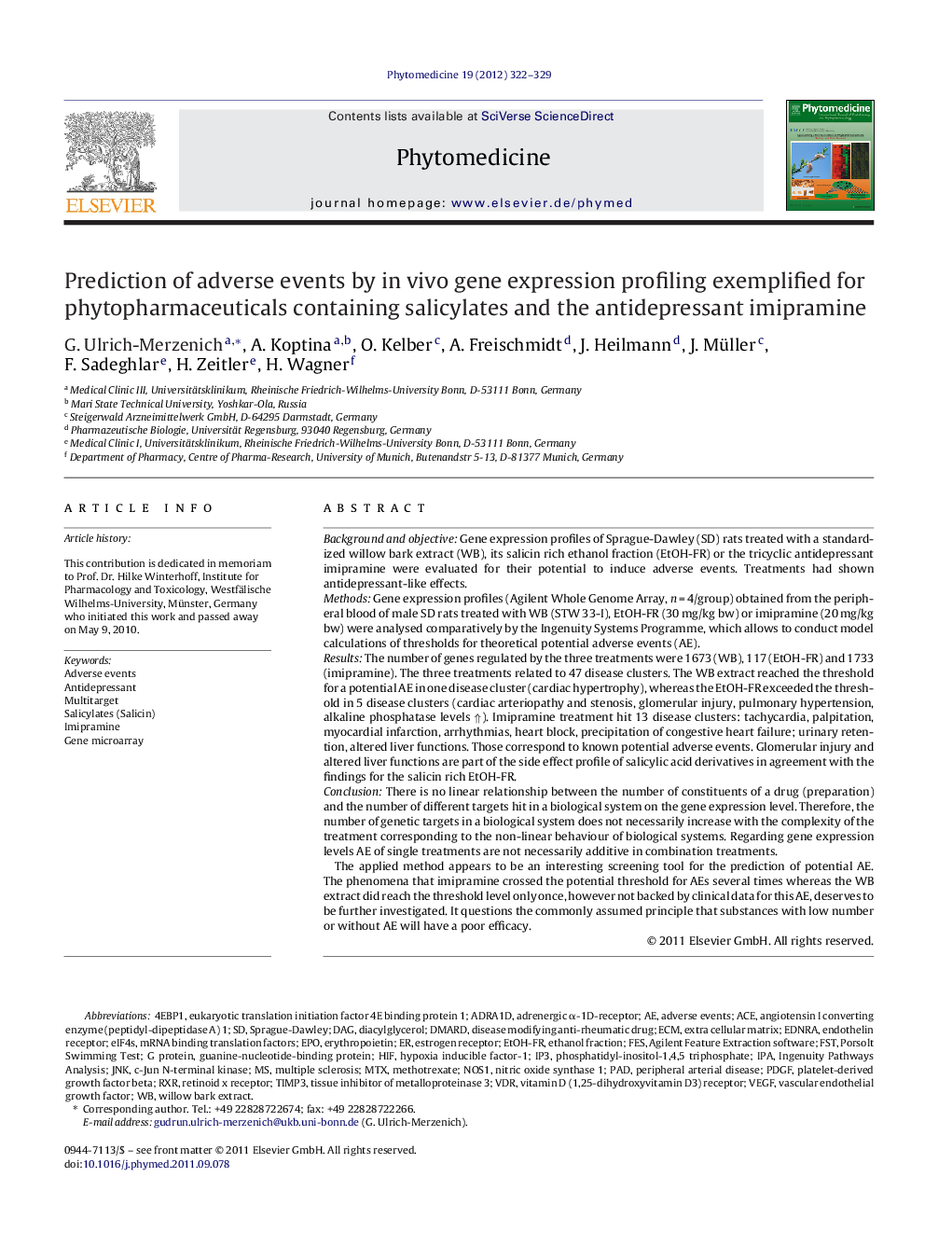| کد مقاله | کد نشریه | سال انتشار | مقاله انگلیسی | نسخه تمام متن |
|---|---|---|---|---|
| 5816817 | 1556702 | 2012 | 8 صفحه PDF | دانلود رایگان |

Background and objectiveGene expression profiles of Sprague-Dawley (SD) rats treated with a standardized willow bark extract (WB), its salicin rich ethanol fraction (EtOH-FR) or the tricyclic antidepressant imipramine were evaluated for their potential to induce adverse events. Treatments had shown antidepressant-like effects.MethodsGene expression profiles (Agilent Whole Genome Array, n = 4/group) obtained from the peripheral blood of male SD rats treated with WB (STW 33-I), EtOH-FR (30 mg/kg bw) or imipramine (20 mg/kg bw) were analysed comparatively by the Ingenuity Systems Programme, which allows to conduct model calculations of thresholds for theoretical potential adverse events (AE).ResultsThe number of genes regulated by the three treatments were 1673 (WB), 117 (EtOH-FR) and 1733 (imipramine). The three treatments related to 47 disease clusters. The WB extract reached the threshold for a potential AE in one disease cluster (cardiac hypertrophy), whereas the EtOH-FR exceeded the threshold in 5 disease clusters (cardiac arteriopathy and stenosis, glomerular injury, pulmonary hypertension, alkaline phosphatase levels â). Imipramine treatment hit 13 disease clusters: tachycardia, palpitation, myocardial infarction, arrhythmias, heart block, precipitation of congestive heart failure; urinary retention, altered liver functions. Those correspond to known potential adverse events. Glomerular injury and altered liver functions are part of the side effect profile of salicylic acid derivatives in agreement with the findings for the salicin rich EtOH-FR.ConclusionThere is no linear relationship between the number of constituents of a drug (preparation) and the number of different targets hit in a biological system on the gene expression level. Therefore, the number of genetic targets in a biological system does not necessarily increase with the complexity of the treatment corresponding to the non-linear behaviour of biological systems. Regarding gene expression levels AE of single treatments are not necessarily additive in combination treatments.The applied method appears to be an interesting screening tool for the prediction of potential AE. The phenomena that imipramine crossed the potential threshold for AEs several times whereas the WB extract did reach the threshold level only once, however not backed by clinical data for this AE, deserves to be further investigated. It questions the commonly assumed principle that substances with low number or without AE will have a poor efficacy.
Journal: Phytomedicine - Volume 19, Issues 3â4, 15 February 2012, Pages 322-329